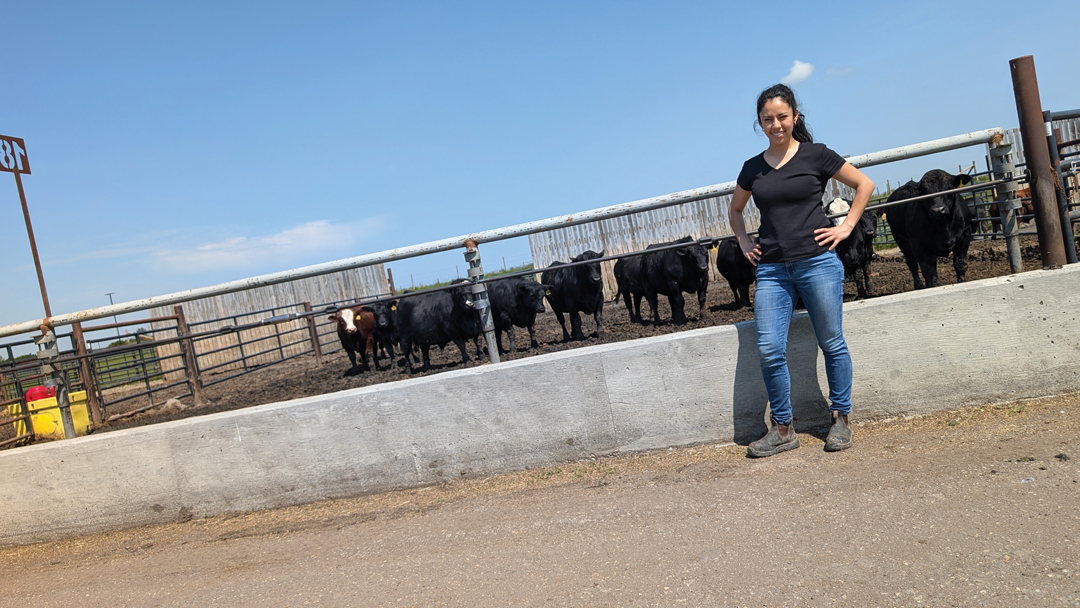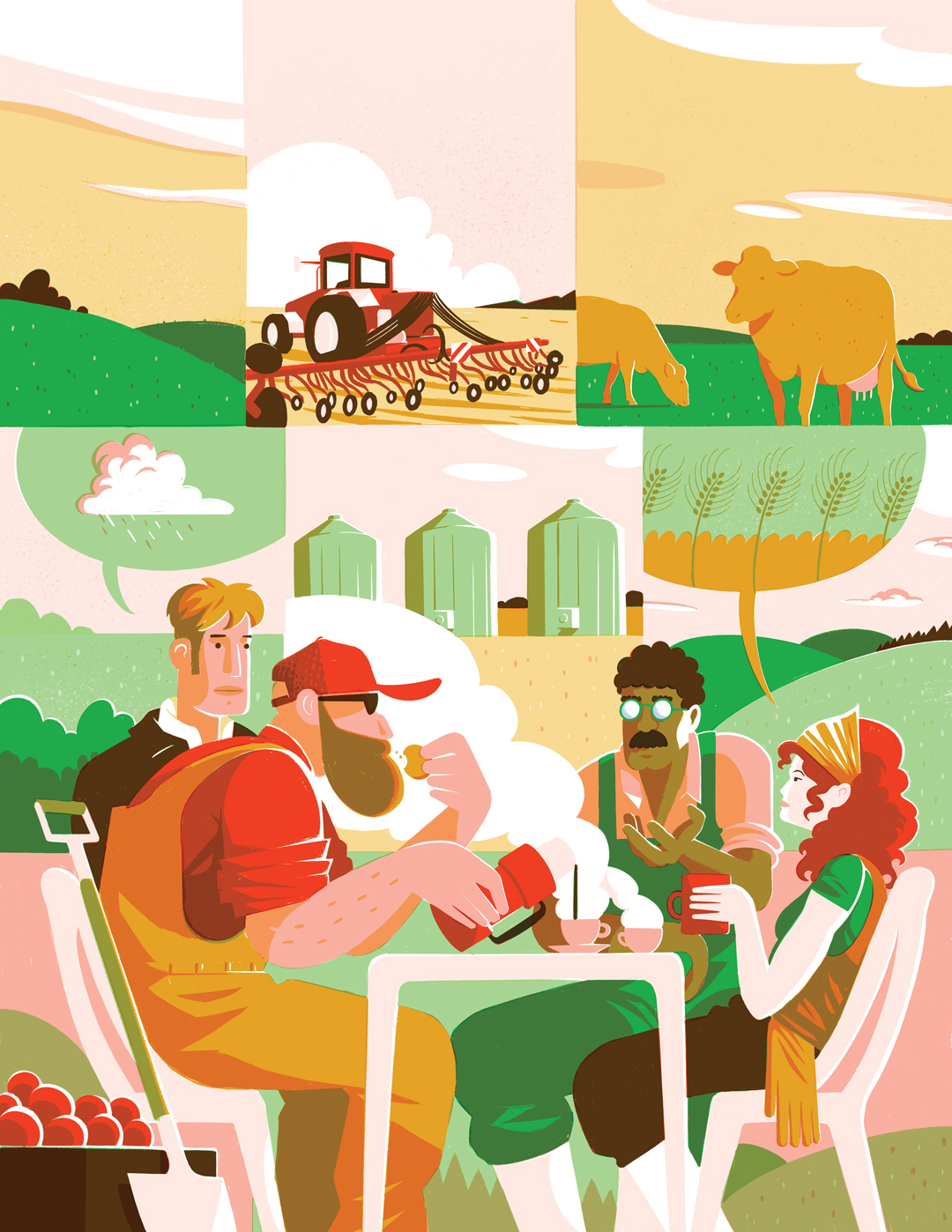A DROUGHT-PROOF CATTLE DIET
BY TIM PARENT • PHOTO COURTESY OF BEATRIZ MONTENEGRO
University of Saskatchewan master’s student Beatriz Montenegro is searching for economical feed options for cattle that are heavy on nutrition and low on water. Supported by the Government of Saskatchewan’s Agricultural Development Fund, her research aims to help farmers maintain high-quality beef production as feed availability fluctuates.
“I wanted something that was going to be practical for beef producers in Western Canada,” said Montenegro. “Are there resources apart from typical cattle feed byproducts or waste products we could take advantage of that we aren’t right now. And can we incorporate them into beef cattle diets?”
Raised by agronomist parents in Mexico, Montenegro’s family moved to Canada in 2006. A biochemistry class at the University of Manitoba steered her into animal nutrition, and she later enrolled at the USask College of Agriculture and Bioresources. Under the guidance of professor Gabriel Ribeiro, the second-year grad student now investigates innovative cattle diets focused on cost-effectiveness and performance.
This includes integration of wheat straw and oilseed screenings, as well as byproducts from the canola and flax seed crushing industry, into cattle diets. Unlike high-nutrient feeds such as grain and silage, these byproducts are potentially cost-effective and nutritionally viable. “I want to see how their performance compares with the standard control diets typically used in western feedlots, which are primarily based on silage and grain,” said Montenegro. “I’ve seen a lot of farmers make use of unusual things in beef cattle diets to economize their operations. I was very excited to look at it from a scientific standpoint.”
Her study uses live cattle trials and lab simulations. To date, one live cattle trial with a backgrounding and finishing phase and one lab study have been completed, with a second lab study ongoing. In the live trial, she tracked 300 steers from the early to late growth stages, their food intake levels, weight gain and meat quality. In the lab, she used an artificial rumen to evaluate the fermentation of the diets fed to the steers in the feedlot trial and measure methane emissions, which are influenced by the fat content in the animals’ diet. The addition of fat from oilseed byproducts boosts the energy in cattle feed but may also lower methane emissions.
Montenegro’s goal is to offer farmers practical diet options that support animal health, are affordable and have a lower negative environmental impact. She stressed her research isn’t about replacing conventional cattle diets in normal backgrounding or finishing feedlots “This would be more of a backup diet. Not long ago, cattle and feed prices were ridiculously high, and drought was decimating feed. Many producers had to make tough choices between keeping their herd or downsizing. If you can feed them this diet and at least maintain them at a lower cost, I think a lot of producers would appreciate that option.”
“Research like this is valuable for addressing critical challenges faced by cattle producers, especially during periods of drought and economic strain,” said Curtis Vander Heyden, Alberta Cattle Feeders’ Association vice-chair. “Developing innovative feeding solutions using locally available and cost-effective byproducts not only supports producers in maintaining herd performance and meat quality, but also aligns with sustainability goals by reducing greenhouse gas emissions.”
Montenegro said more data from the remaining lab trial is on the way. She is also processing and analyzing all the data collected during the cattle feedlot study. That information will help farmers improve their operational efficiencies, the health of their herds and meet the demands of high-quality beef production.







Comments